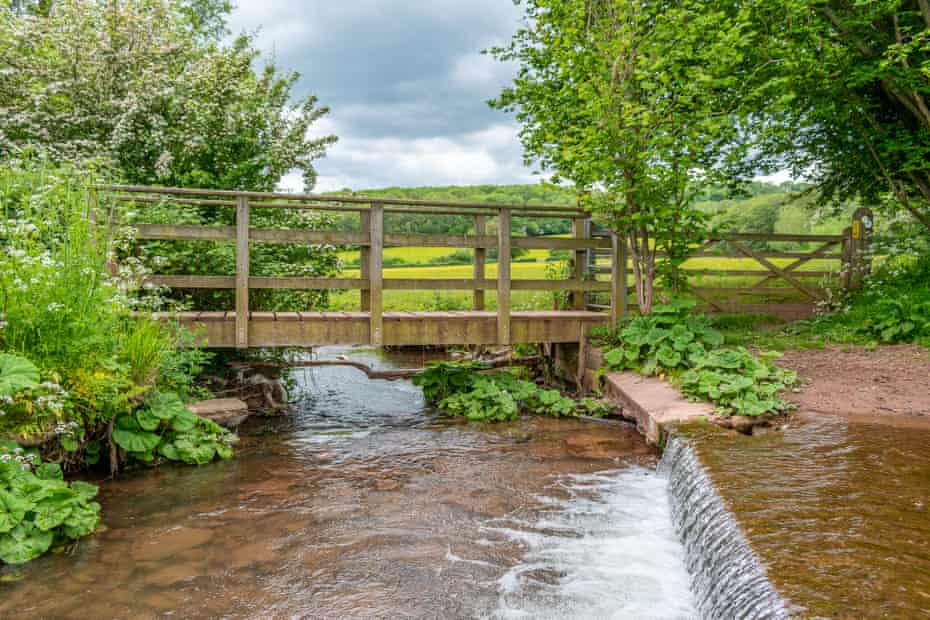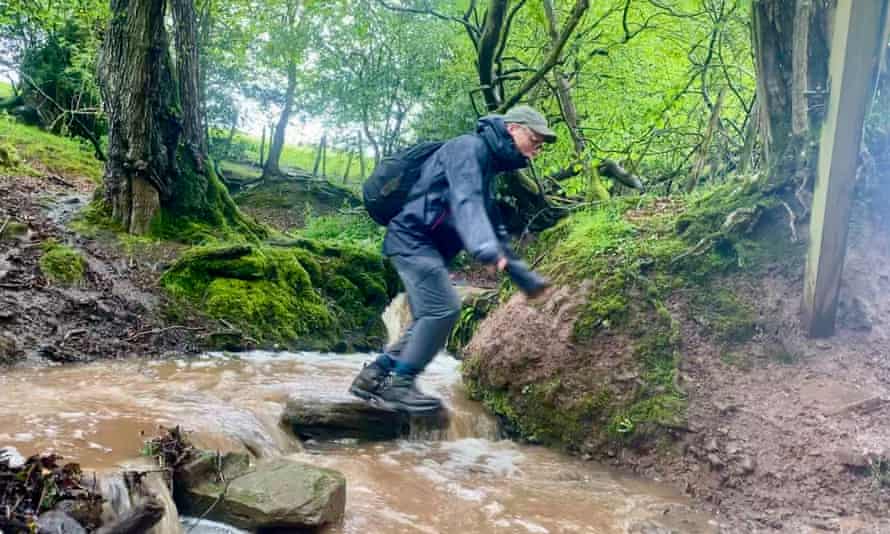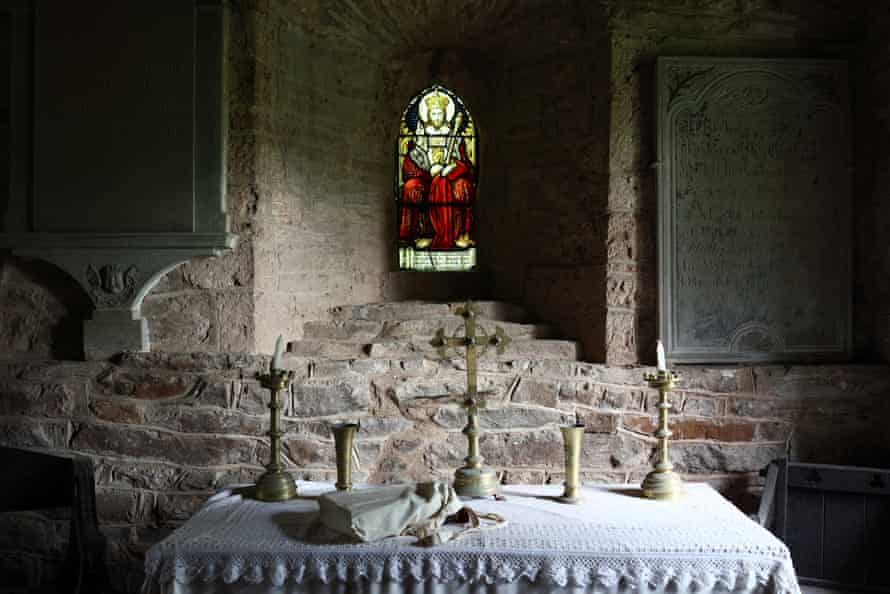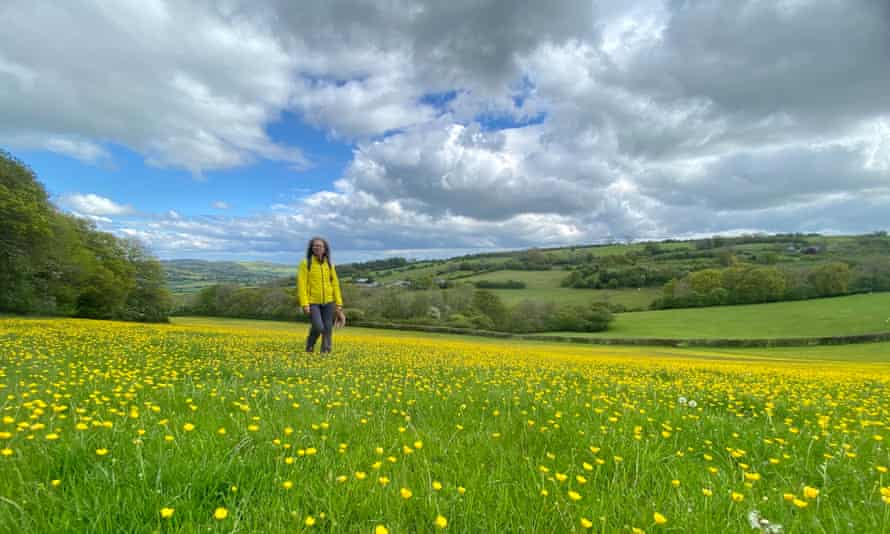What makes a great long distance walk? The UK has more than 1,600 with more popping up every year. Some are geographically obvious: ridge lines and riverside rambles that jump off the map. But what about the rest? Which will succeed and become hiking stalwarts like the Pennine Way or Coast-to-Coast? Herefordshire’s latest candidate is the 45-mile Twin Valley Ley Line Trail.
On 30 June 1921, 100 years ago, antiquarian Alfred Watkins, a born and bred Herefordian, took a walk through the Herefordhsire hills and decided he could detect straight lines connecting ancient sites and spiritual landmarks across the countryside. He dubbed them ley lines – routes crisscrossing the landscape that our ancestors might have followed. The archaeological community was not entirely persuaded, but half a century later the counterculture movement picked up the idea. Before long, ley lines were being interpreted as anything from neolithic trade routes to UFO navigational aids.

As well as the Twin Valley trail, there’s a new 106-mile driving and cycling route, the Watkins Way, both taking in castle ruins, hillforts, and ancient sites dotted along ley lines. Centenary celebrations include a festival (19 June-3 July) with guided walks, a pilgrimage and workshops; from 19 June-11 September there’s also an exhibition at Hereford Museum – Watkins was a pioneering photographer.
The entire Twin Valley trail, which partly follows two parallel rivers, the Dore and the Monnow, can be done in three or four days. Starting from the village of Ewyas Harold, 10 miles south-west of Hereford, the trail looks like the perfect midsummer walk, but I have my own navigational problem: where is the path? Being first on a new trail has some challenges, such as a lack of signposts (coming soon!), plus the ravages of a torrential downpour that has torn down a footbridge and turned our map into a wet dishcloth.
“We should have brought the laminated,” says Sophie, my partner, sheltering under a giant oak. “Are we on a ley line?”
“Are you feeling some Earth energy?” I ask.
“No, I’m just shivering.”

We plough on and come to a barbed-wire fence behind which stands a glaring bull with testicles the size of spacecraft. We return to the oak and pick up a trail that leads, eventually, to our first spiritual waypoint: the 11th-century church of Llancillo, emerging mysteriously from behind the cloud and a stand of redwood trees. We are drenched, but the church is dry, and catacomb-quiet. These lost and silent chapels will adorn our walk like “dots on God’s eyelash”, as one poetic church warden tells us.
I’ll admit to a frequent sense of disappointment when I enter a House of God. Not only is the Almighty absent, but frequently the dreaded Victorians got there first, inserting their clunky woodwork and garish glass. What I want is beams of mystic light dancing with ghostly dust, ancient carvings and a statue of a knight brandishing a sneering skull. This clutch of churches would provide all of these, and more.
Llancillo was an excellent start. Accessible only on foot, it stands on a ley line identified by Watkins that leads us on to the next spot, Walterstone church, where I find the tomb of a man named Urbane Cheese. The pleasure of this sustains me all the way to Longtown and its pub The Crown (doubles from £75 B&B), our first overnight stop. This amiable inn may feature the kind of wallpaper that brings Carrie Johnson out in hives, but that kind of heritage also comes with a full-size bath, enough hot water to sink a Johnson, and pints of Wye Valley Brewery’s finest Butty Bach.

Next day is a 21-mile yomp, starting with another magnificent church: Llanveynoe, where two mysterious Saxon crosses are pock-marked with pagan defilements. This place hums with ancient resonances. To the west looms the dark featureless escarpment of the Black Mountain. We walk north on a bridleway poised on the hillside between the enclosed fields below and open wilderness above. With some sunshine breaking through, this is magnificent hiking, all the way to Craswall Priory, a 13th-century ruined abbey, then over Cefn Hill (pron. Kevin) and up Merbach Hill (318 metres) for great views of the Wye Valley. The trail now drops to the neolithic tomb of Arthur’s Stone. The massive cap stone, at 25 tonnes, was popped into place about 5,000 years ago, but sadly got cracked when King Arthur slew a giant whose elbow landed on it.
This relic sent Alfred Watkins into an ecstacy of azimuths and alignments, the tomb being on several old greenways and lining up with various churches and distant peaks. The midsummer alignment was pure Watkins, the rising sun cutting through not only Arthur’s Stone but Cefn Hill, Bredwardine Castle, a spot known as the Golden Well and a standing stone that had “been moved to make a gatepost”. His 1925 book The Old Straight Track was the culmination of his obsession. The alignments of ancient mounds, tumps, hillforts and peaks were “facts beyond the possibility of accidental coincidence”.
Our own alignment was down to nearby Dorstone and the excellent Pandy Inn B&B (doubles £85, B&B), housed in log cabins and run by the joyfully larger-than-life Magdalena. Anyone on a genuine pilgrimage could head for the church, which also welcomes overnight stops.

Next day we walk down what is known as the Golden Valley, the valley of the River Dore. Winding through woods and meadows, this is as close to bucolic bliss as you might hope for in the 21st century. A broad green lane lined with oak and field maple leads to Saint Margaret’s church, which contains a rare treasure: a stunning rood screen carved in about 1520. Faces stare out from its sumptuous tangle of vines and oak, perhaps of the craftsmen who made it, men born in the middle ages, for whom the Battle of Bosworth Field was still a talking point.
The next treat comes quickly: Bacton Church, where I finally get my knight carrying a sneering skull. The big reward, however, is a replica of the old altar cloth: five years ago this was discovered to be part of one of Elizabeth I’s dresses, the only large fragment of her clothing that survives. It was packed off to Hampton Court in 2019 for restoration and display. This faithful replica is a stunning item, embroidered with sea monsters, jungles and fauna. The red colours are from Mexico; the indigo blue is from India. If Shakespeare ever plied the needle, this is what he would conjure.
We hike over the village common back to Ewyas Harold and the Temple Bar Inn (doubles £90, B&B) where workmen are swigging jugs of cider. It might have been a scene from the woodcarvings of St Margaret’s church, except for the hi-vis clothing. This walk will, I’m certain, survive to become a national favourite.
The trip was provided by Visit Herefordshire. Luggage transfers (£25 each) were provided by Eco Carriers
…




